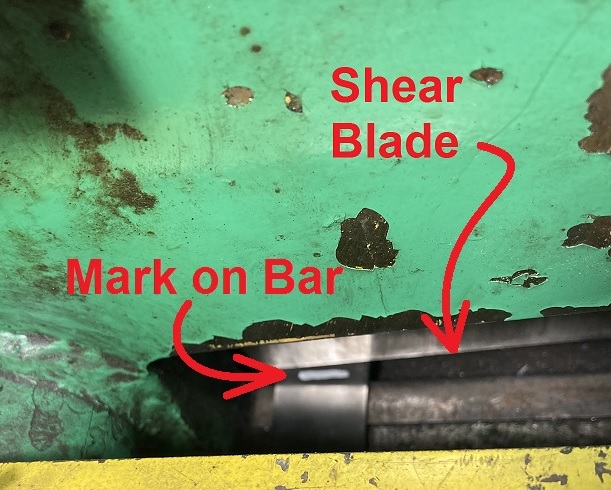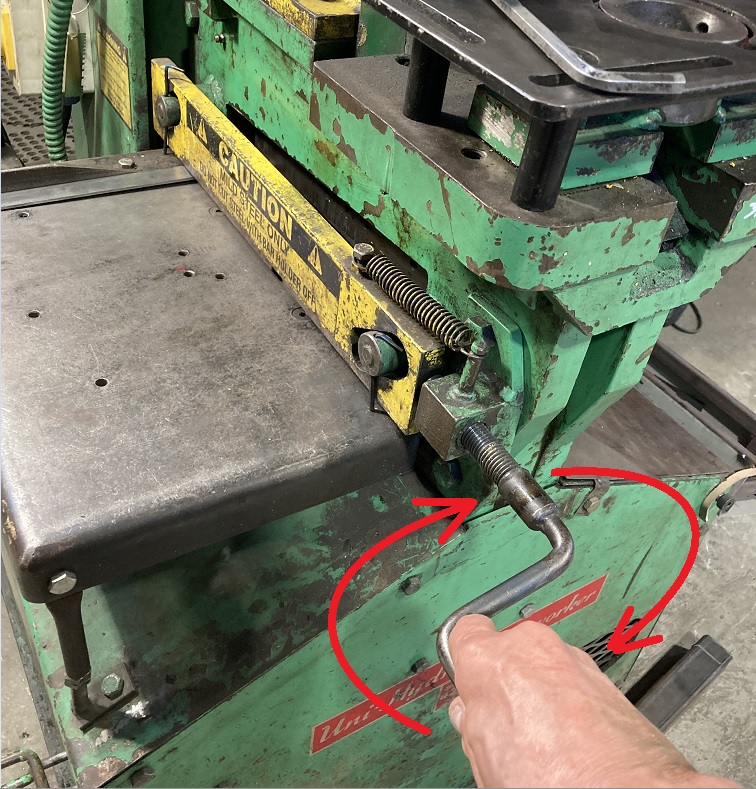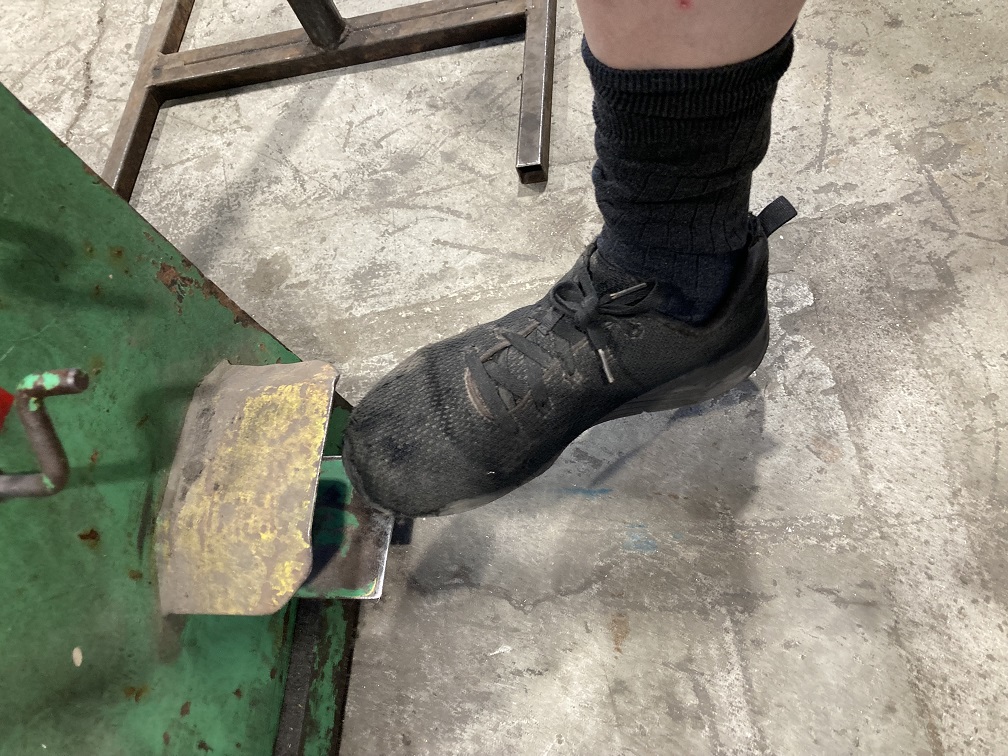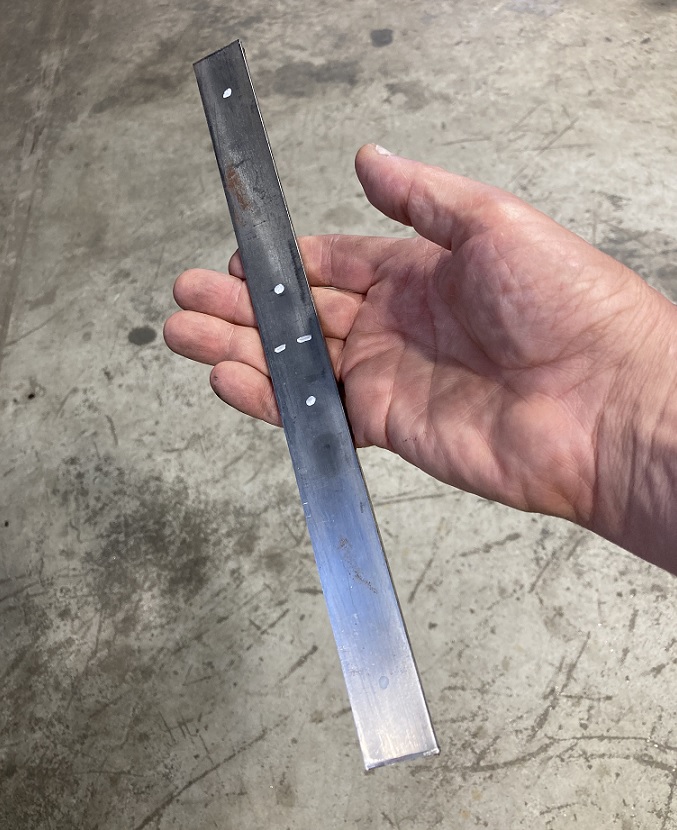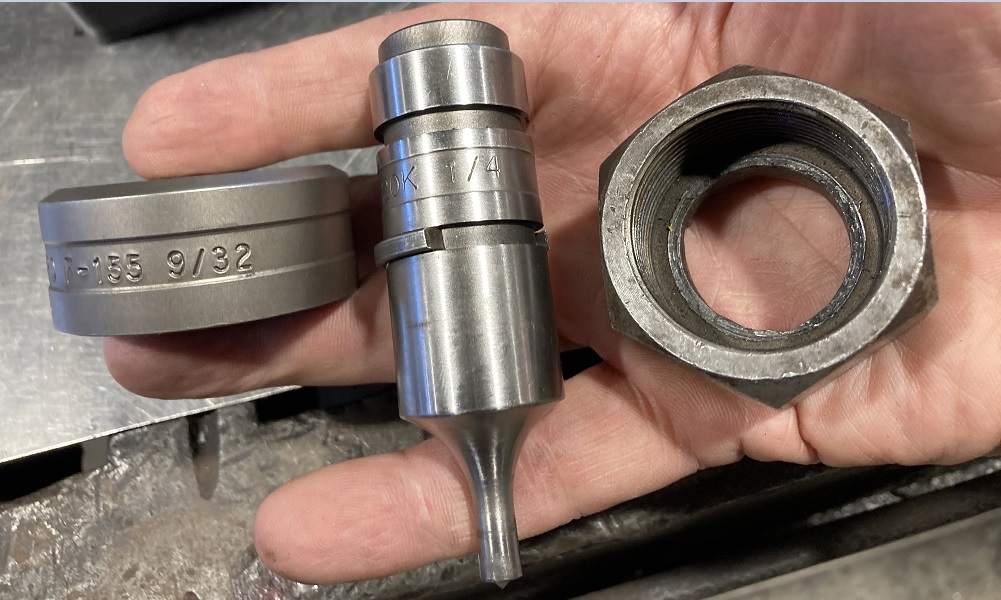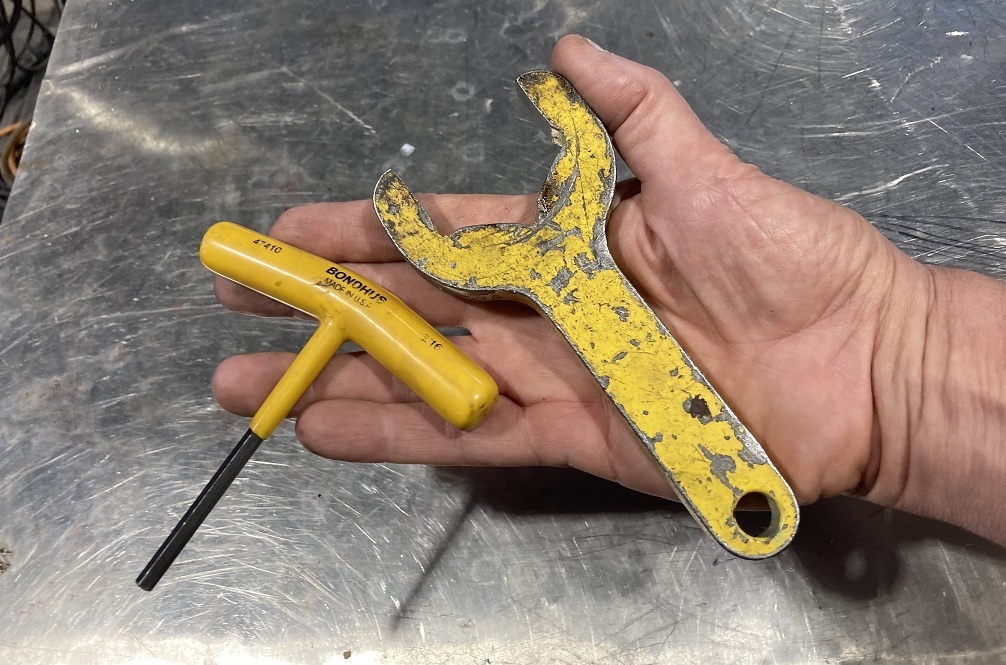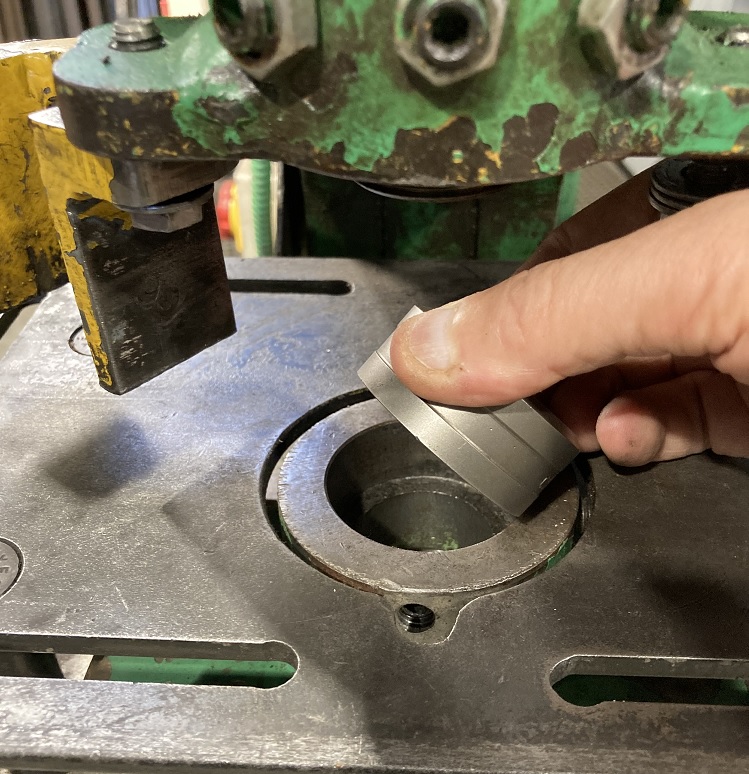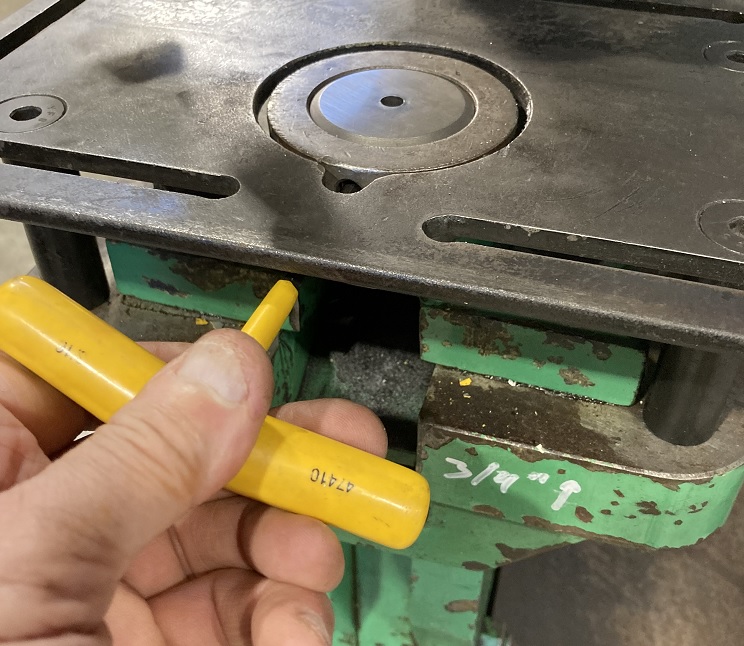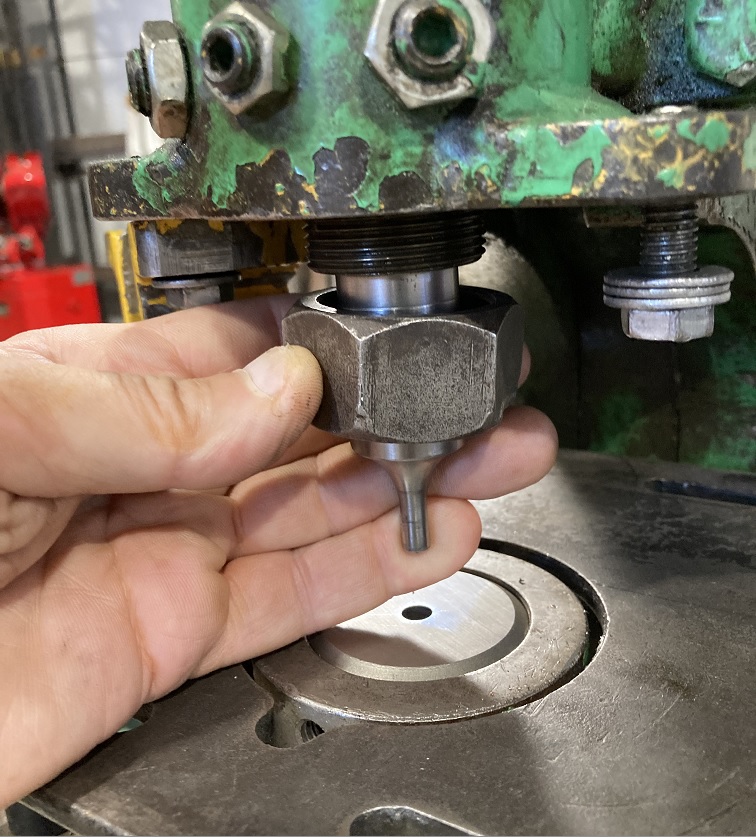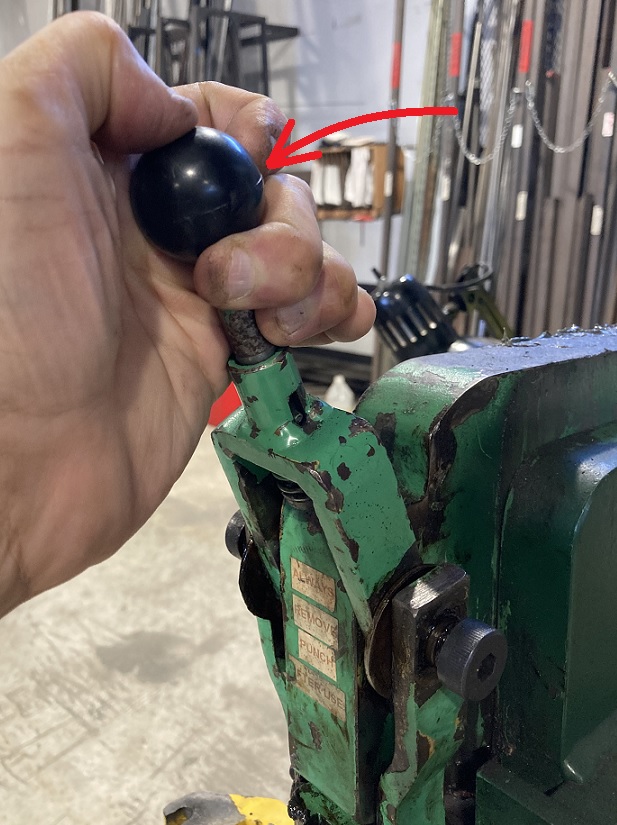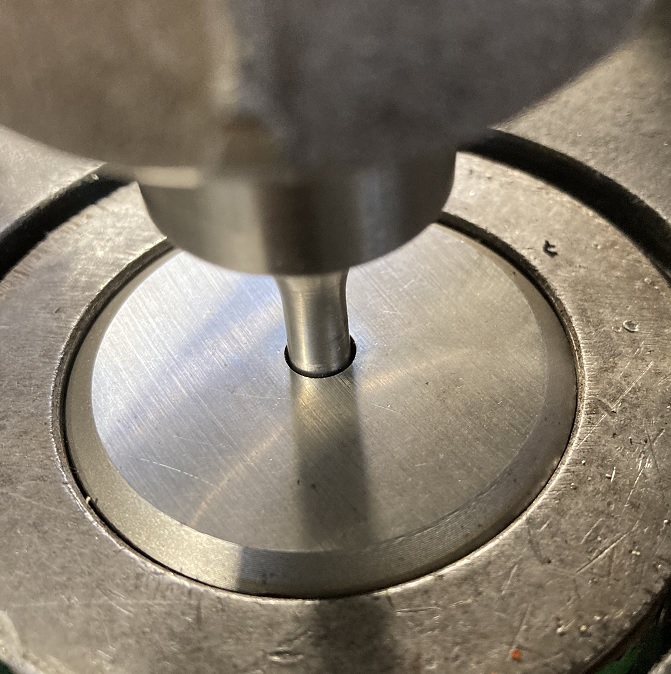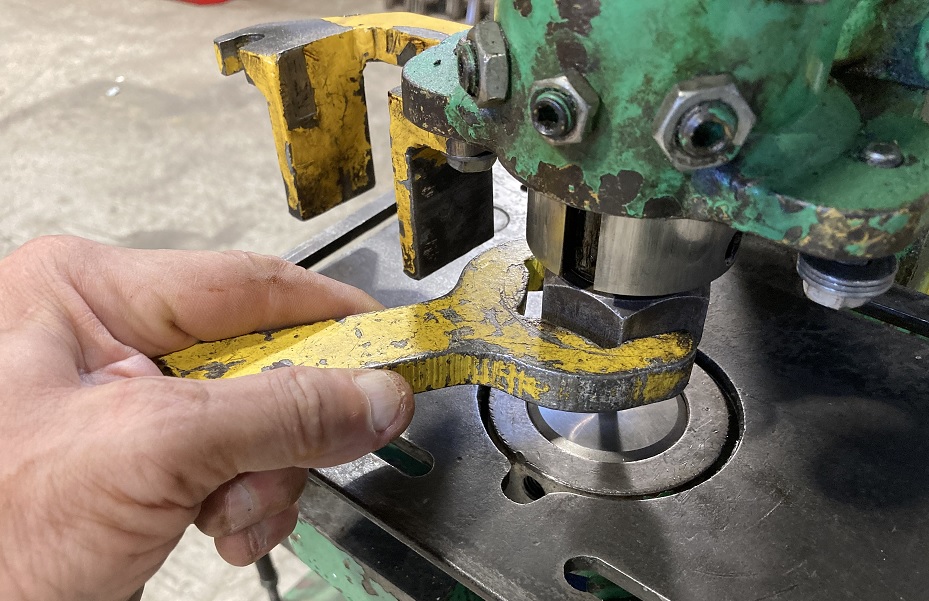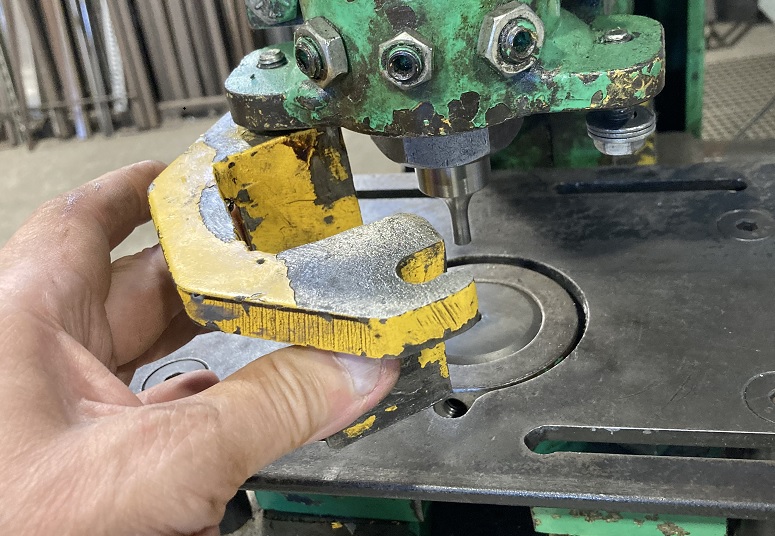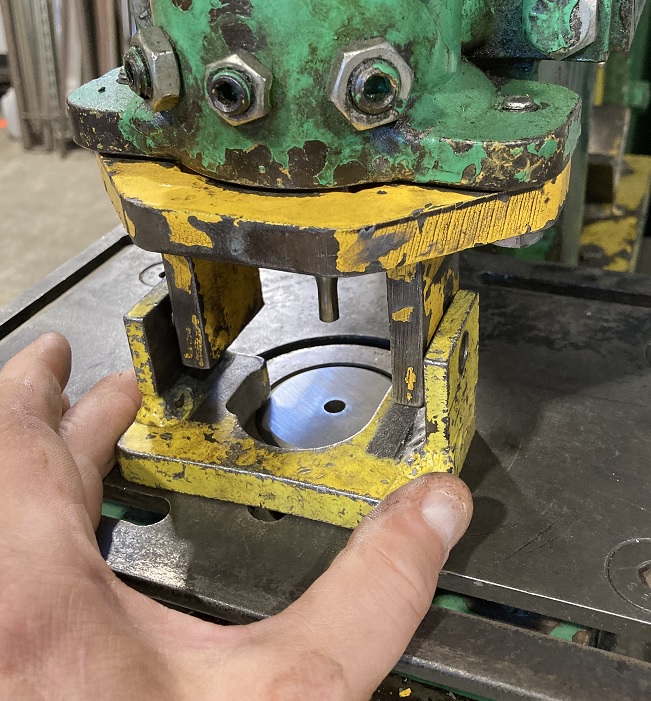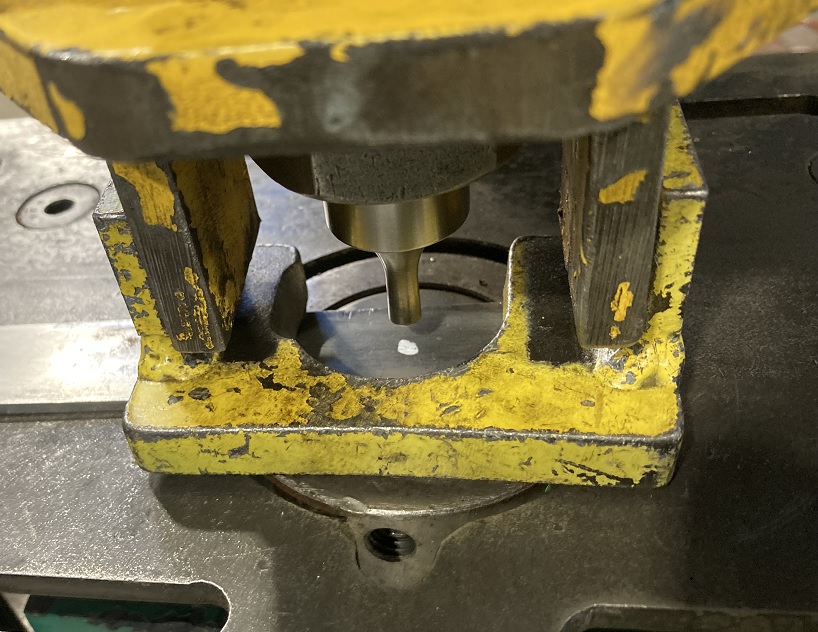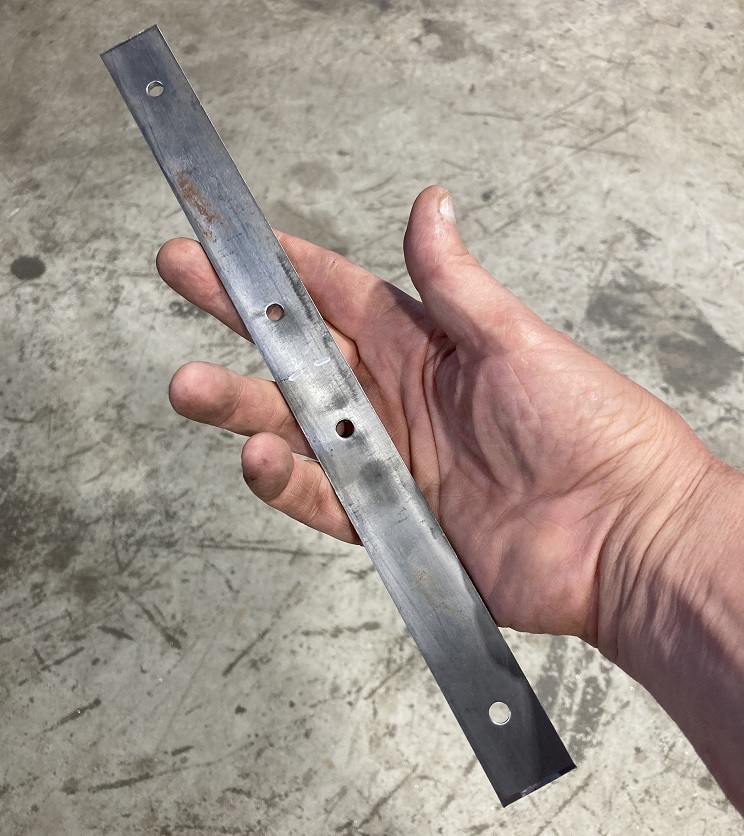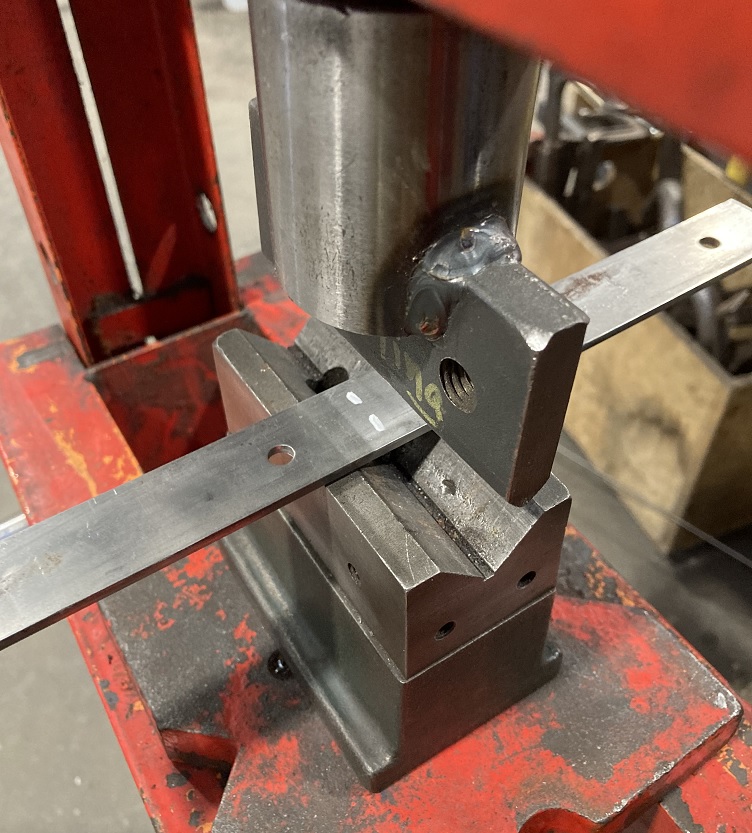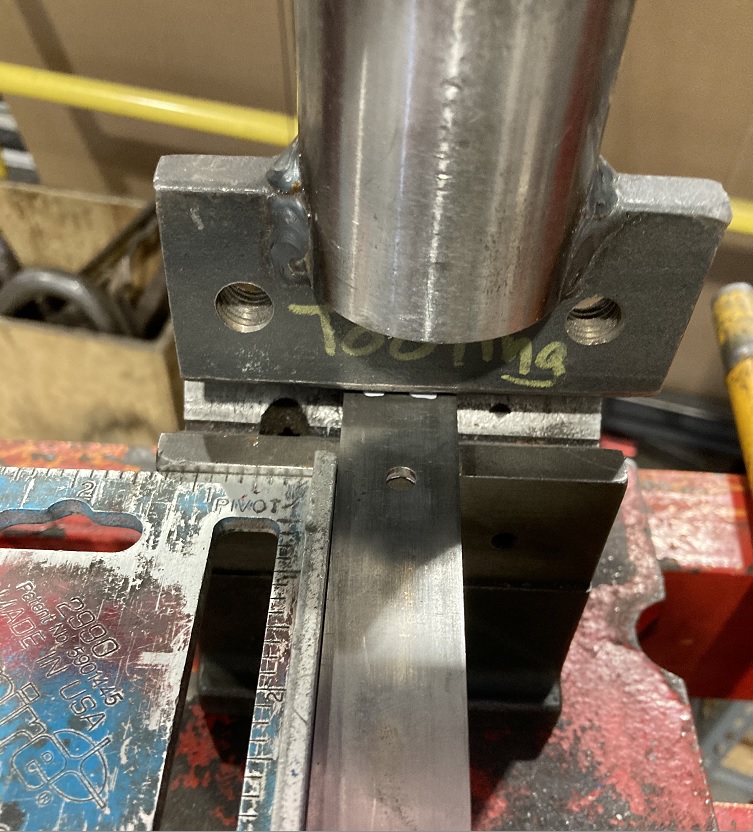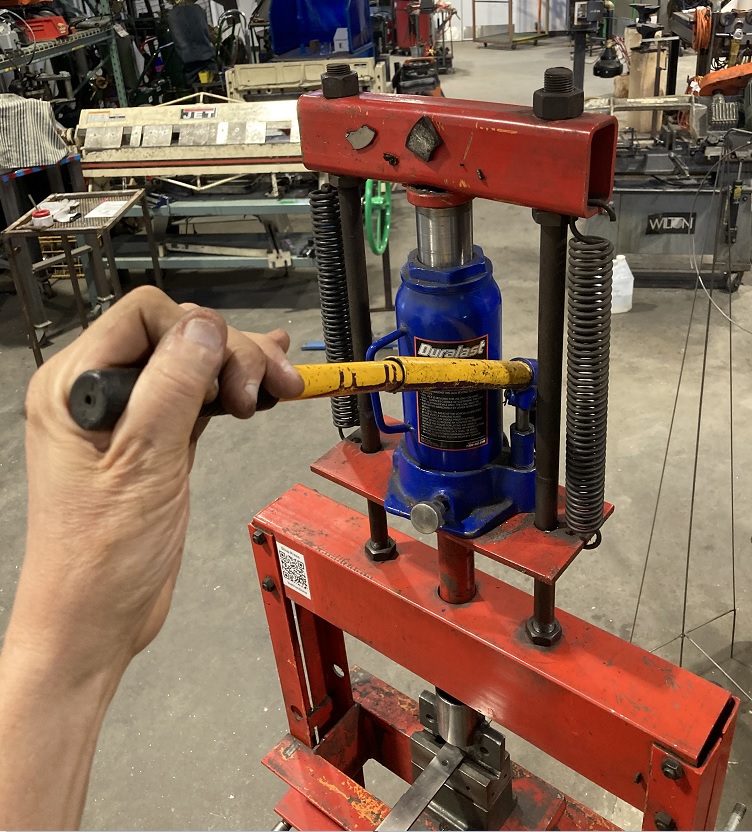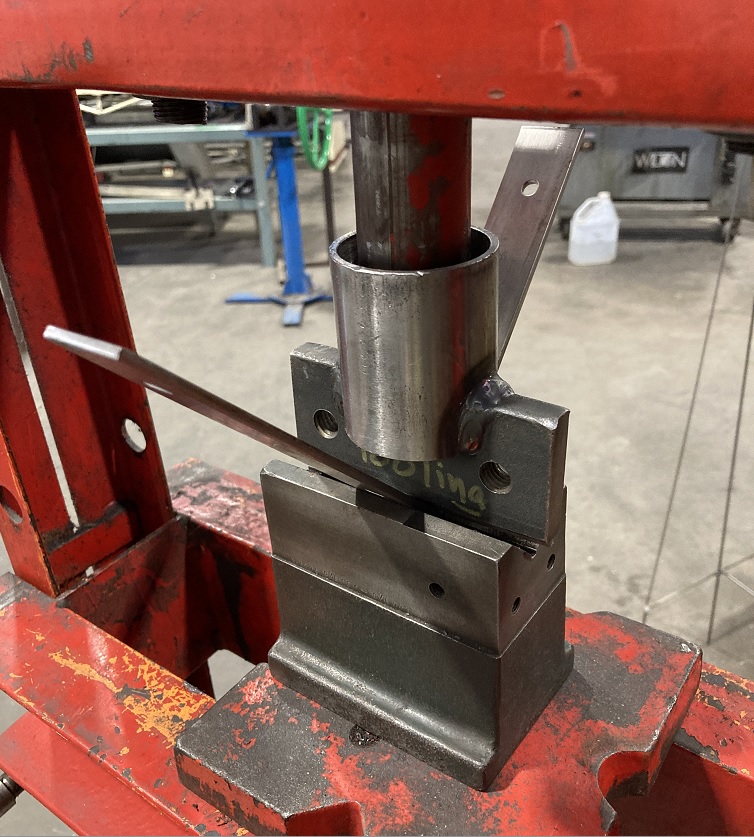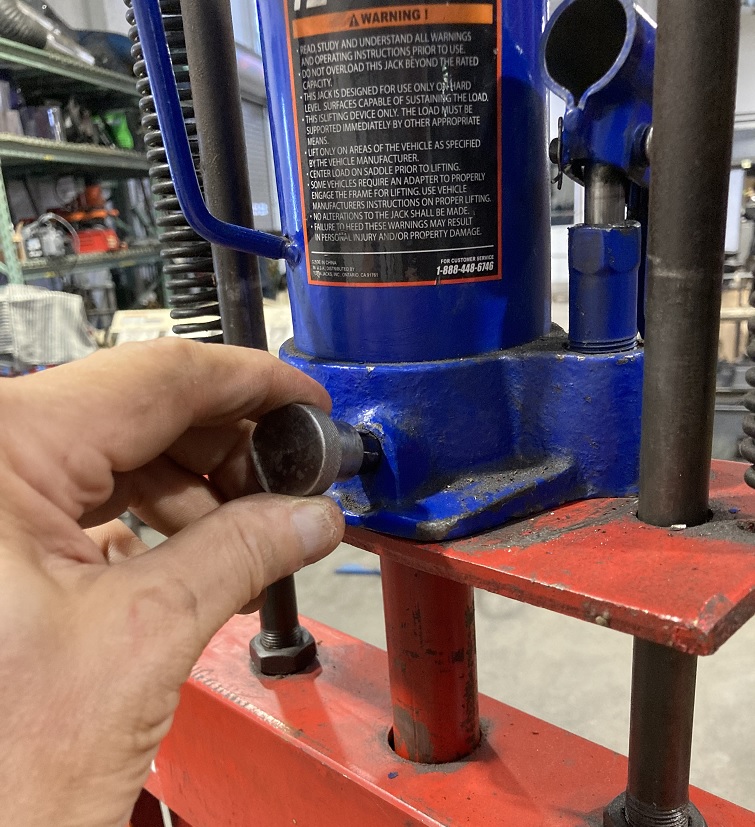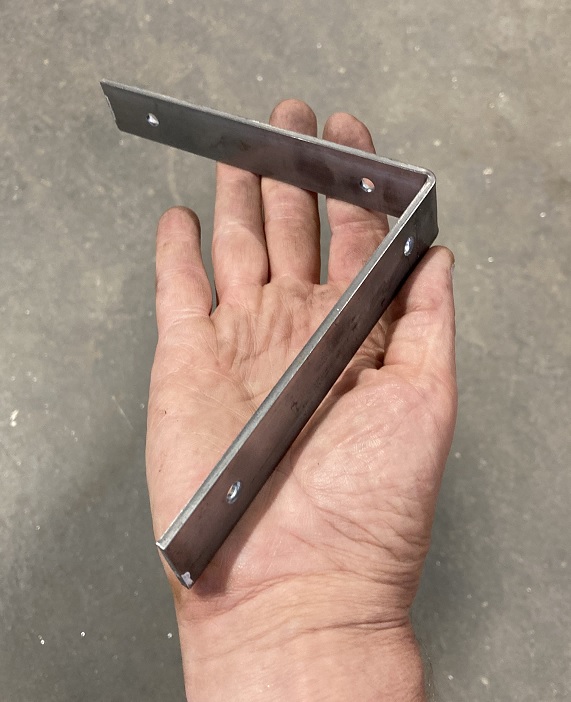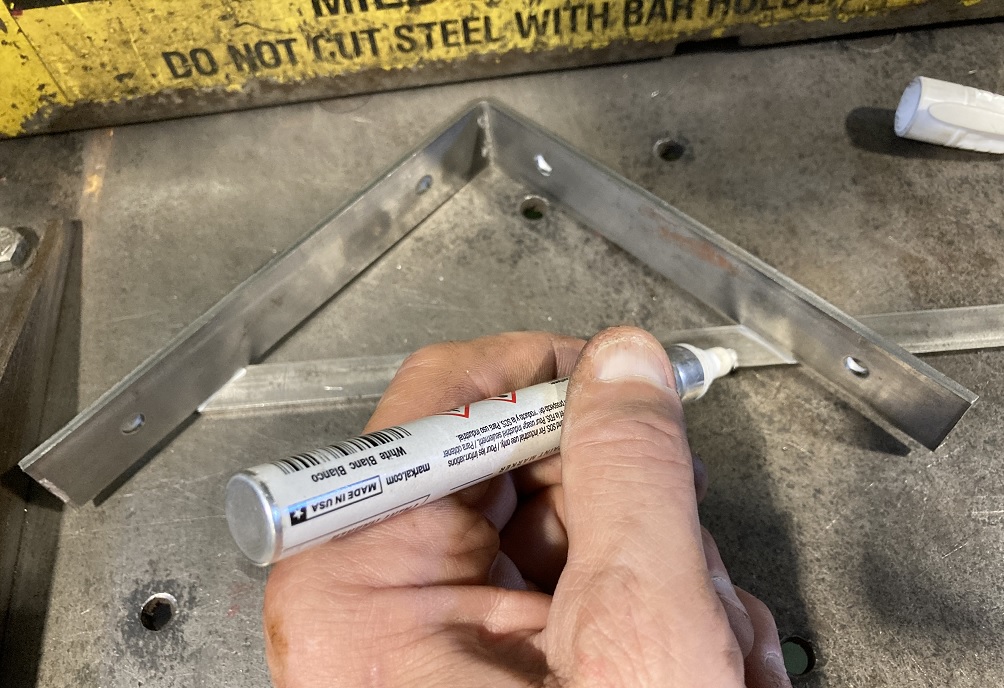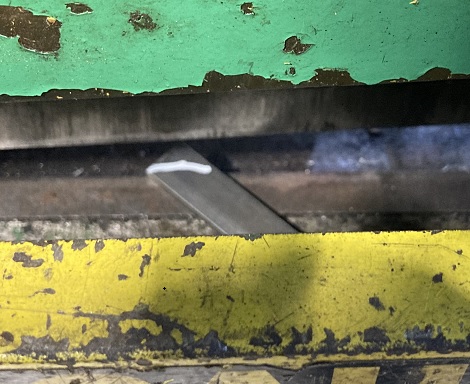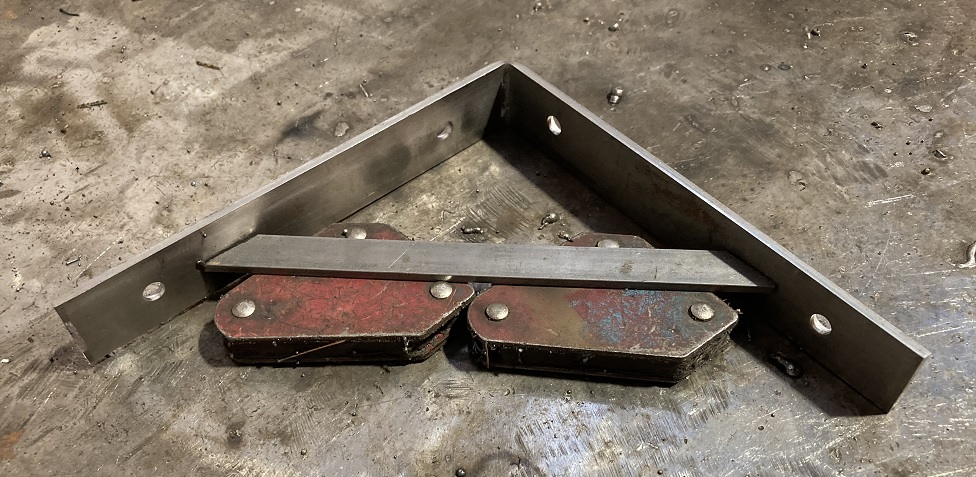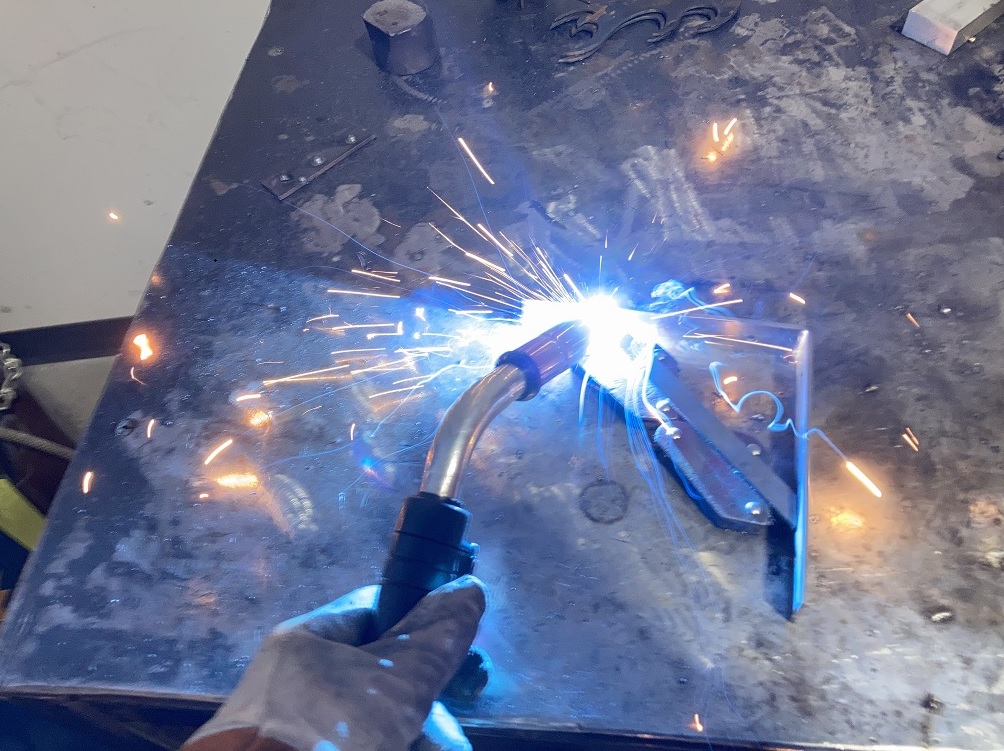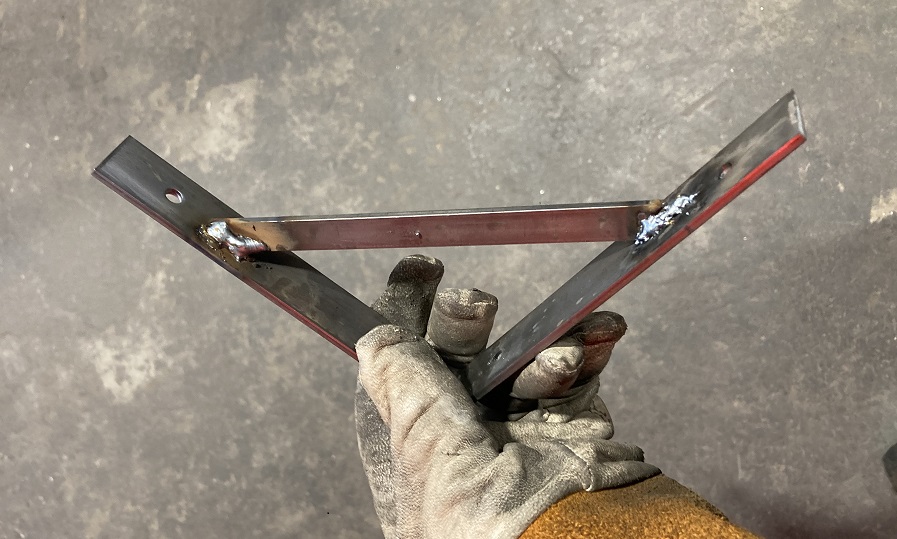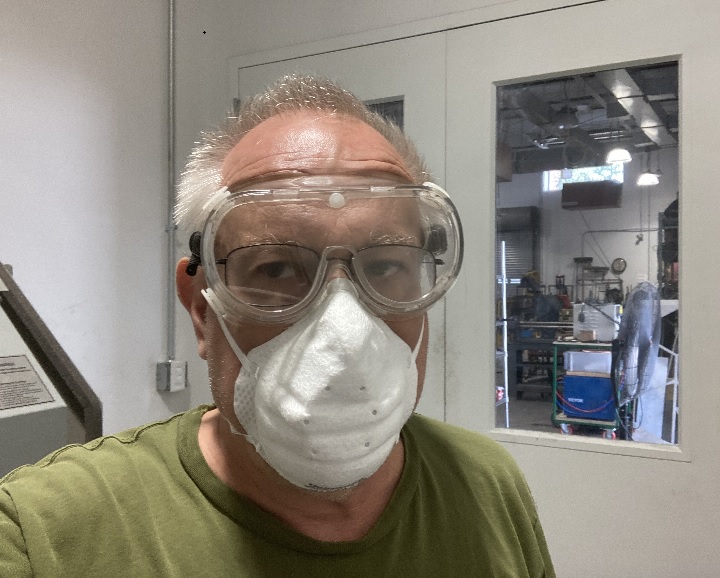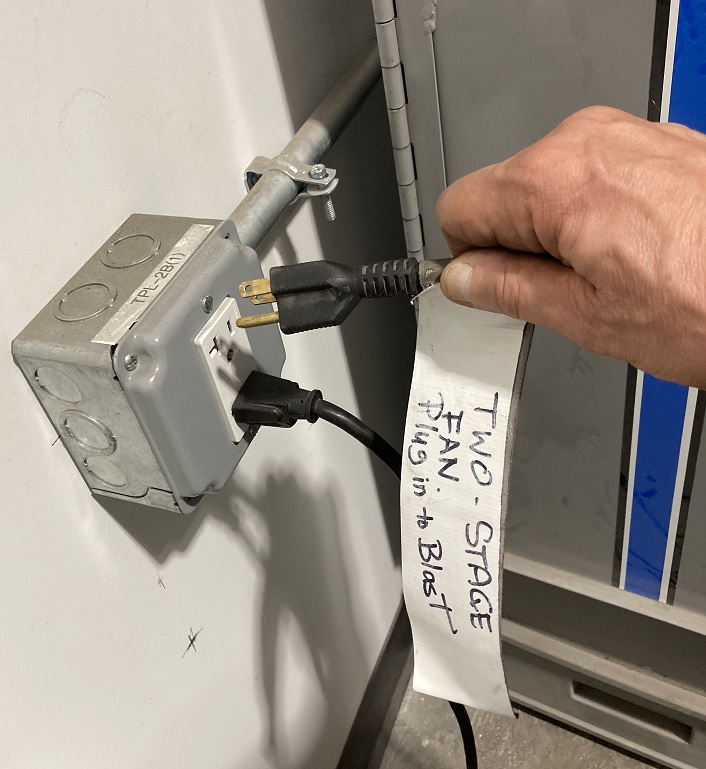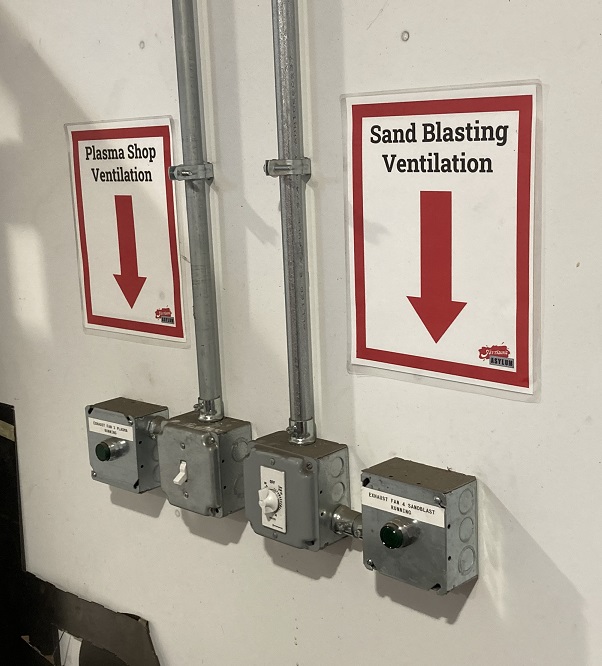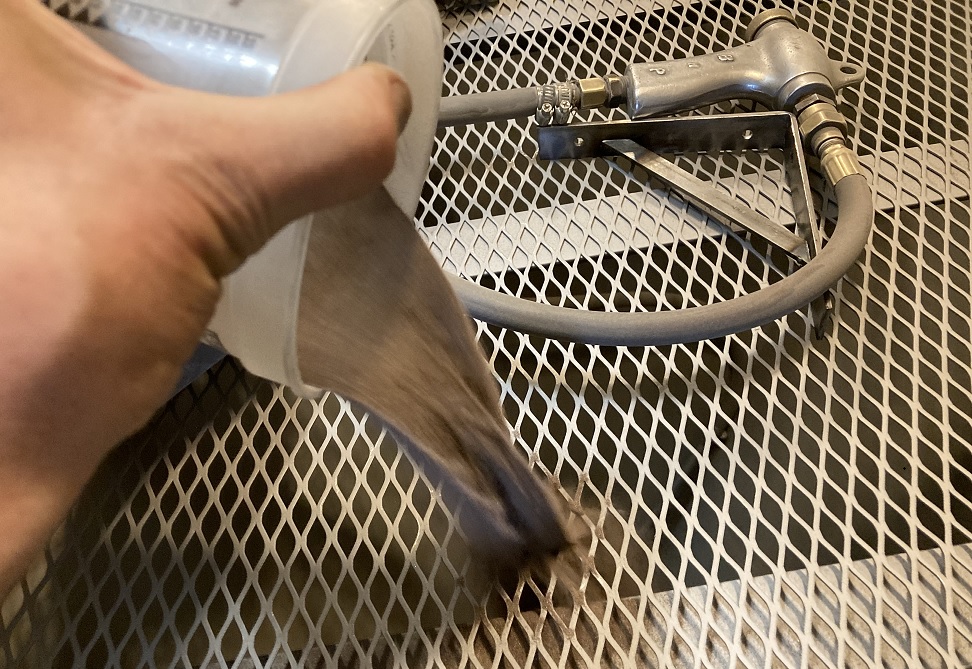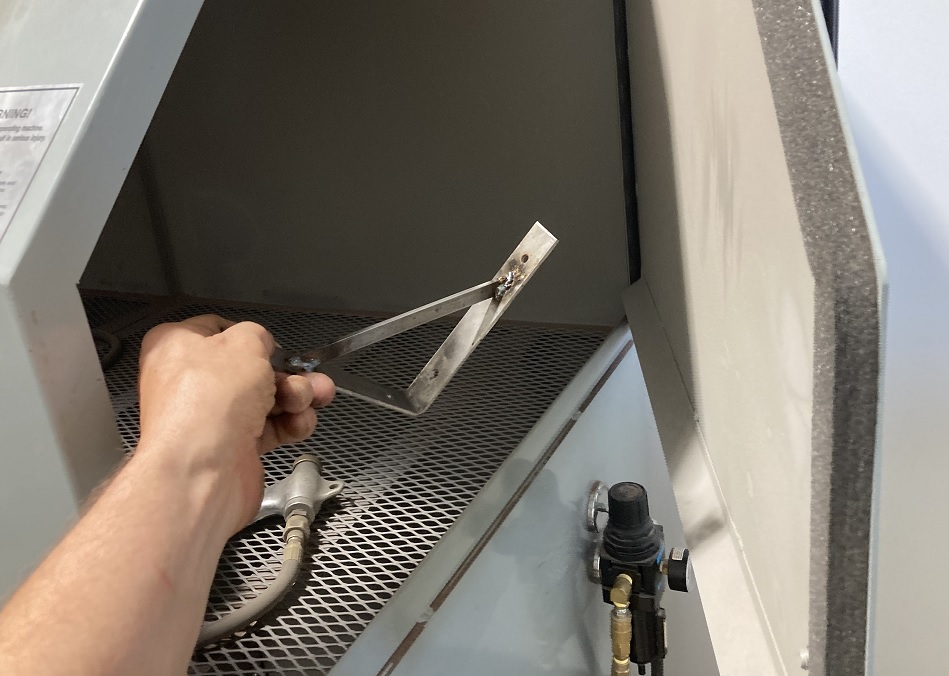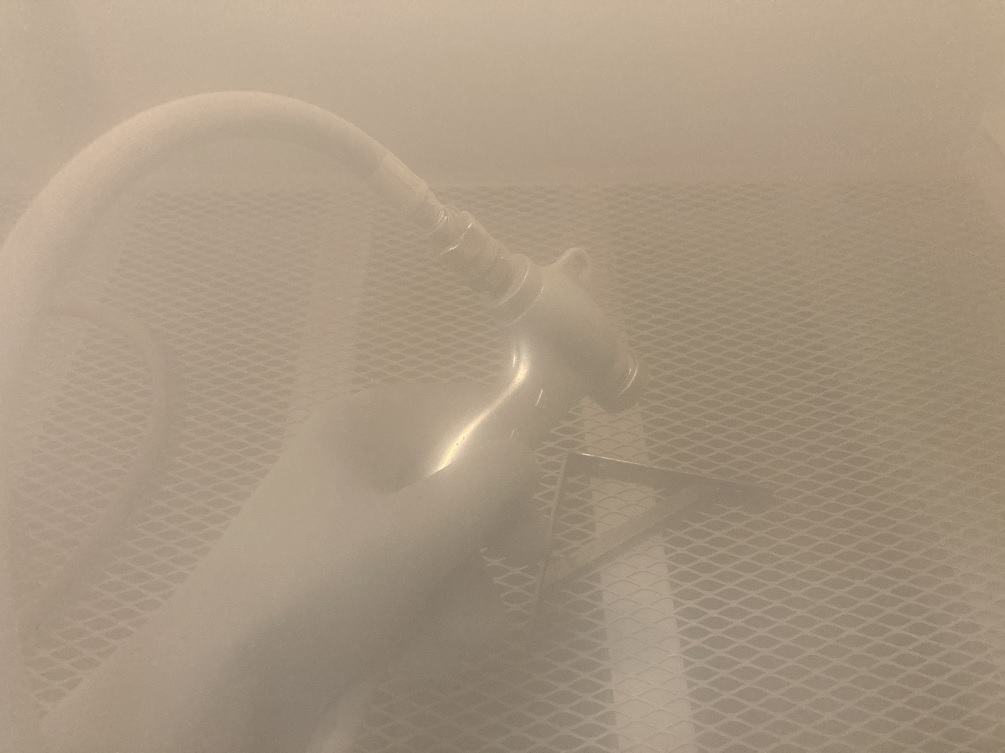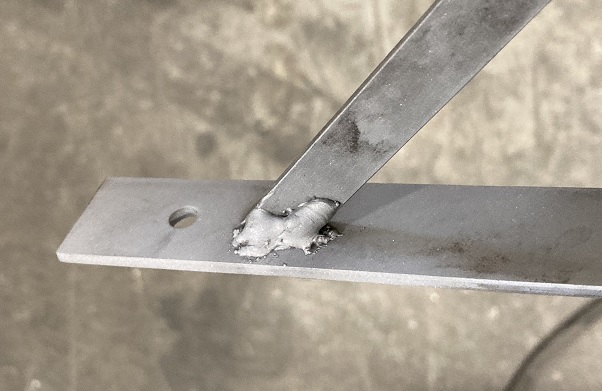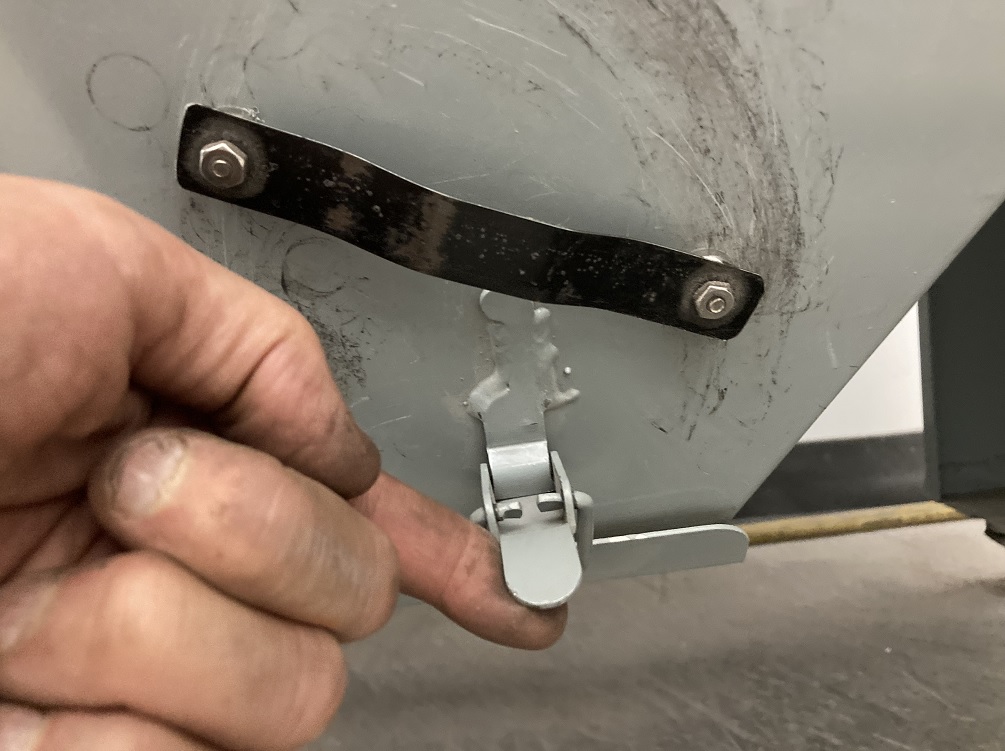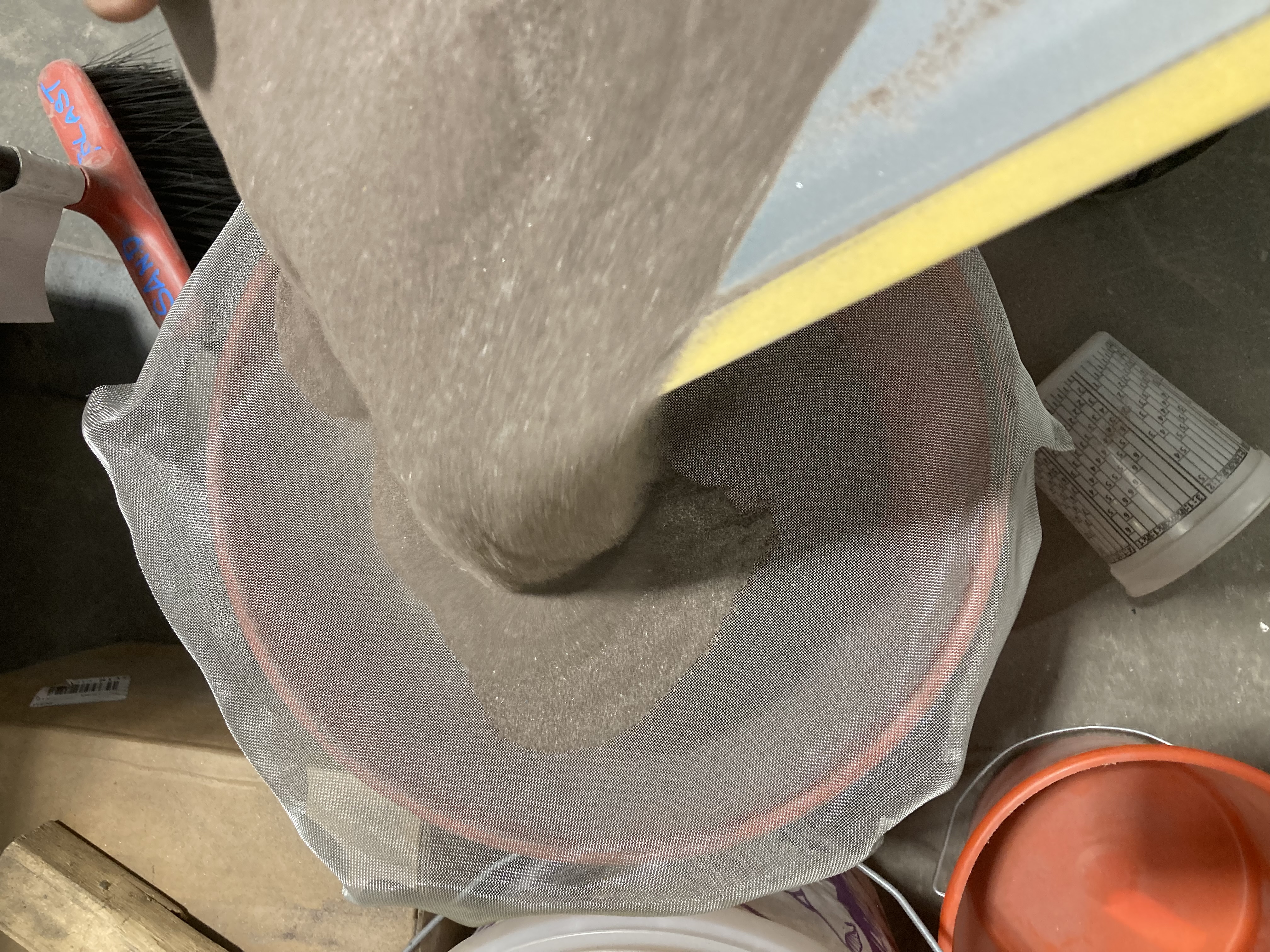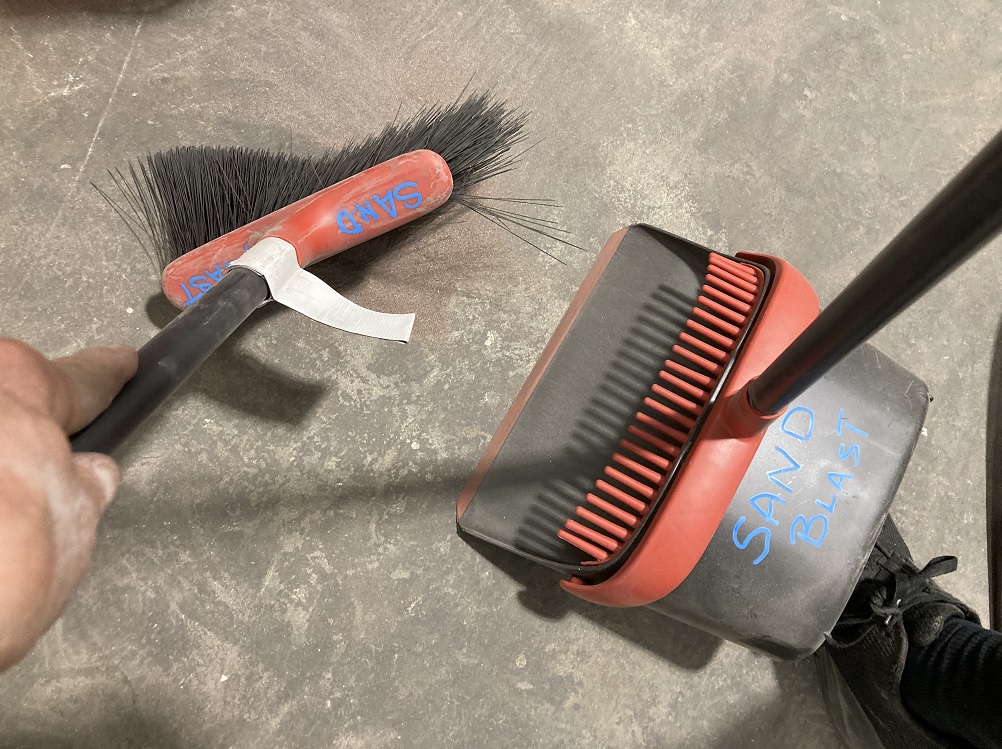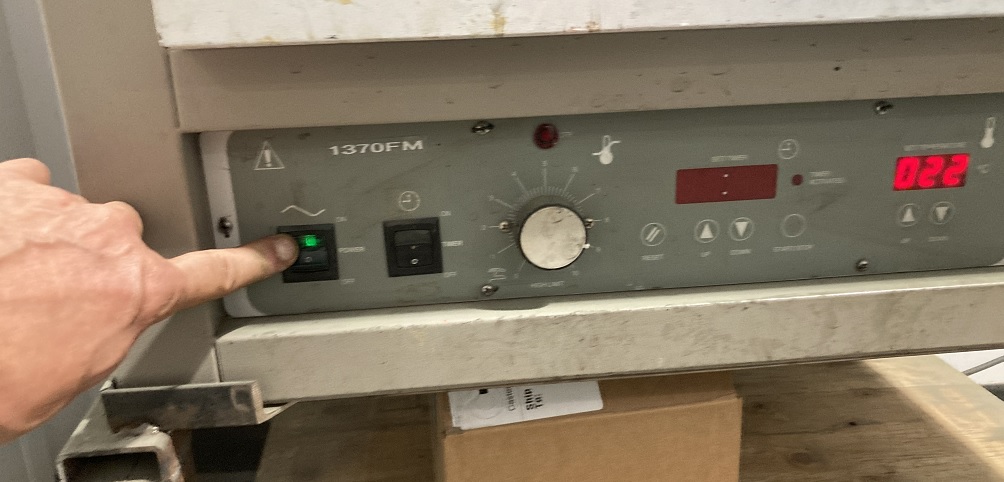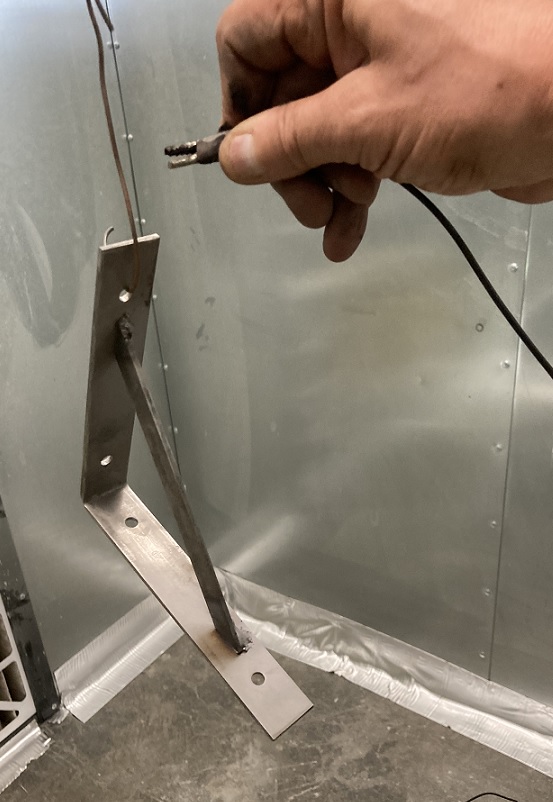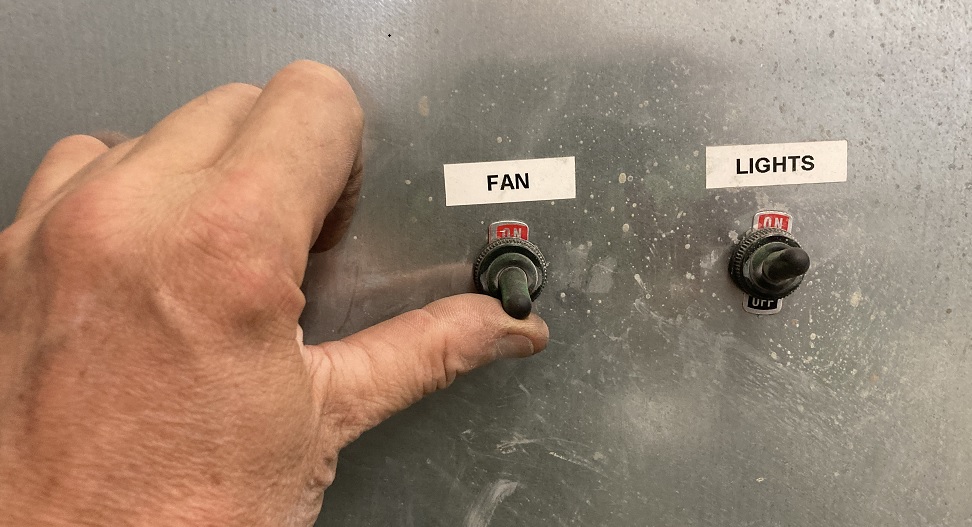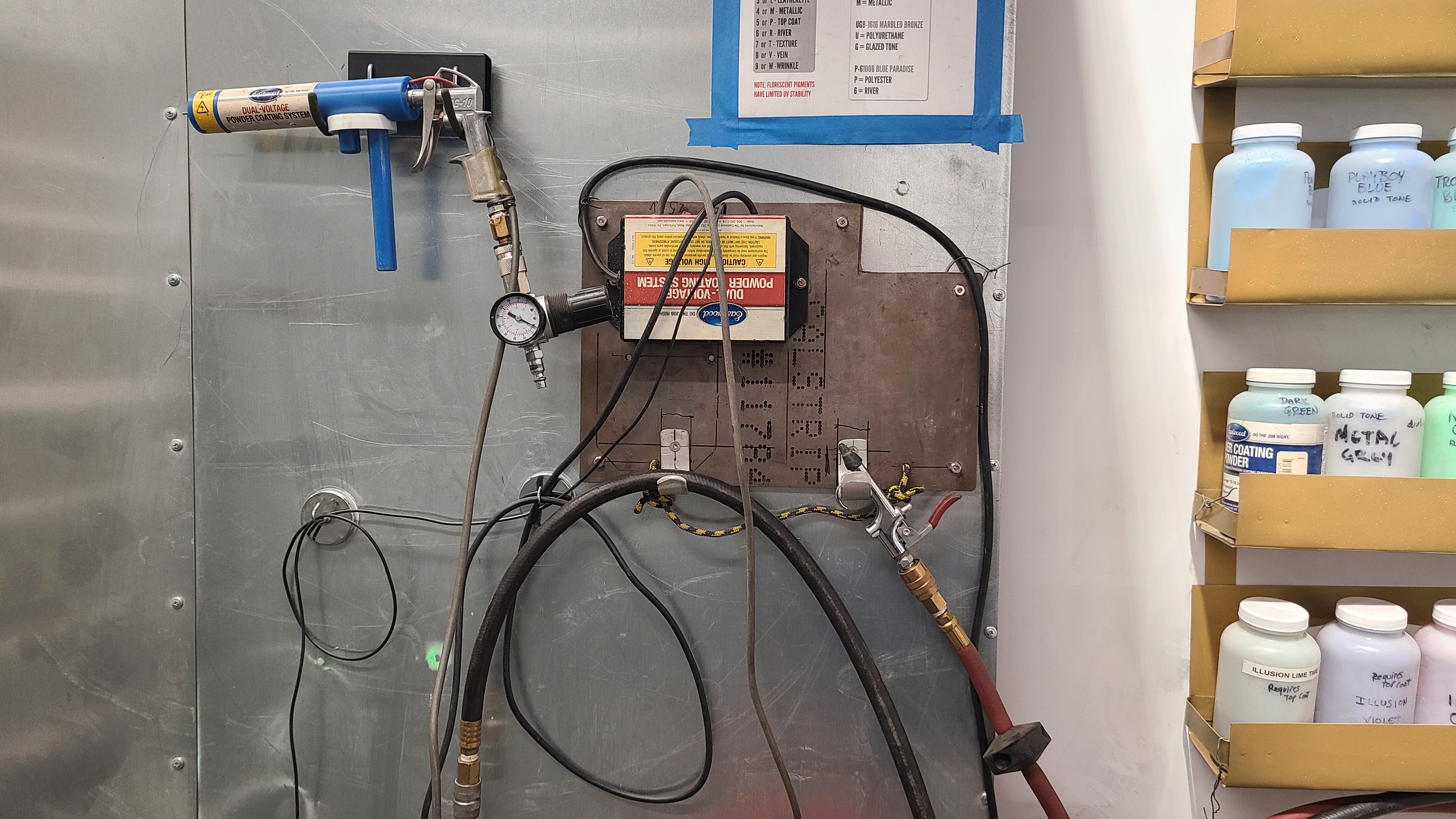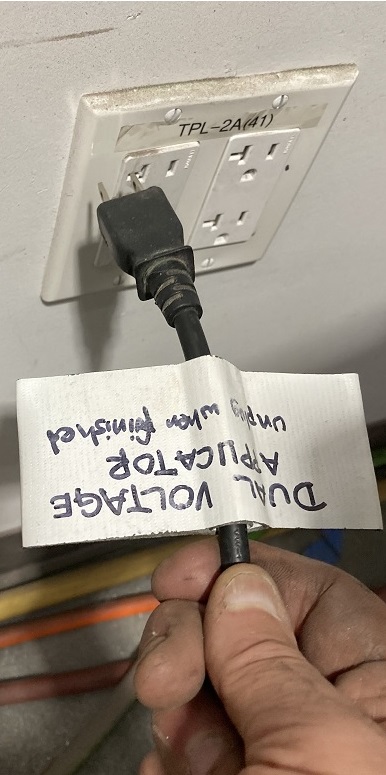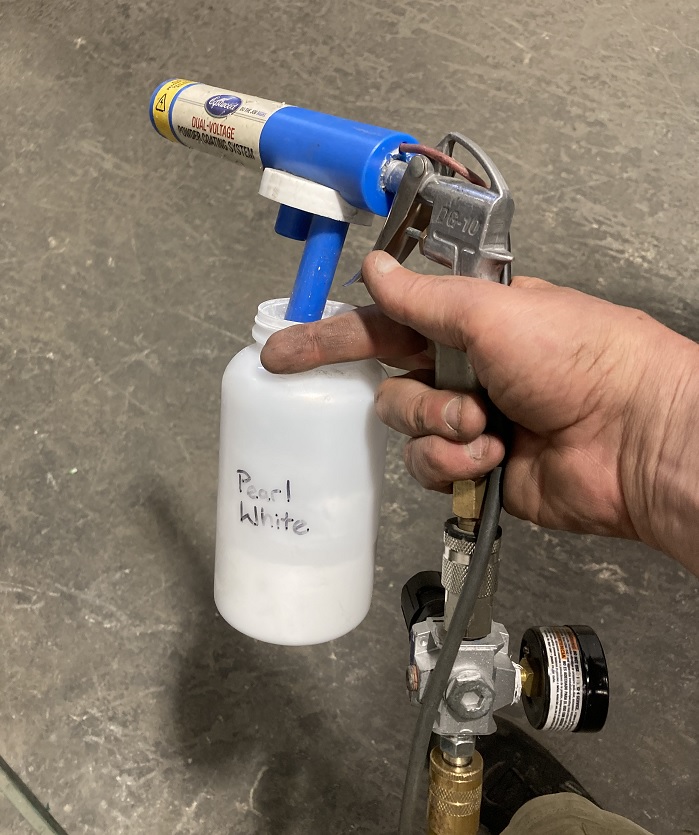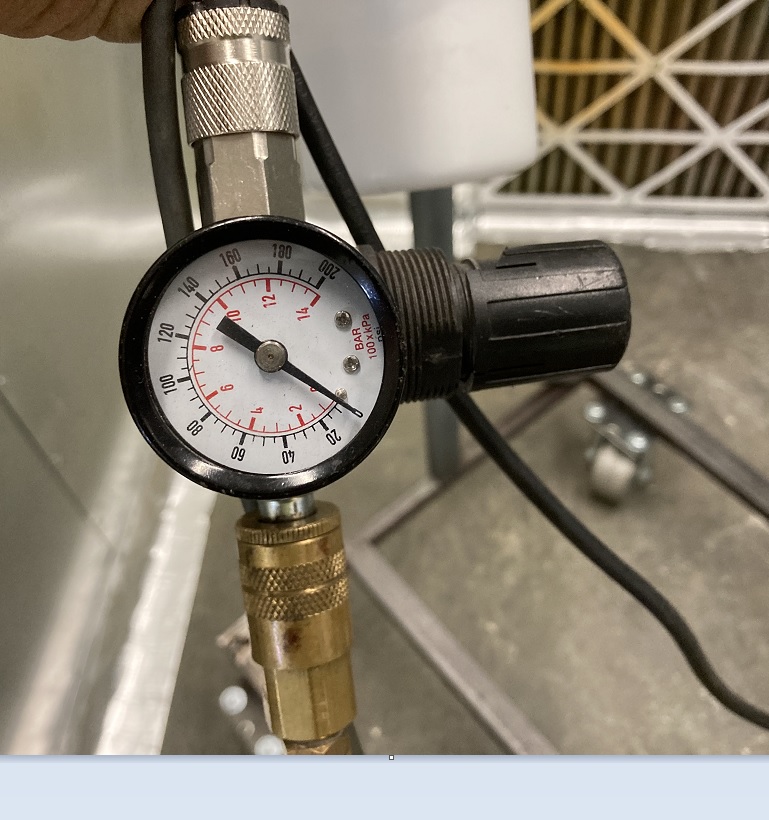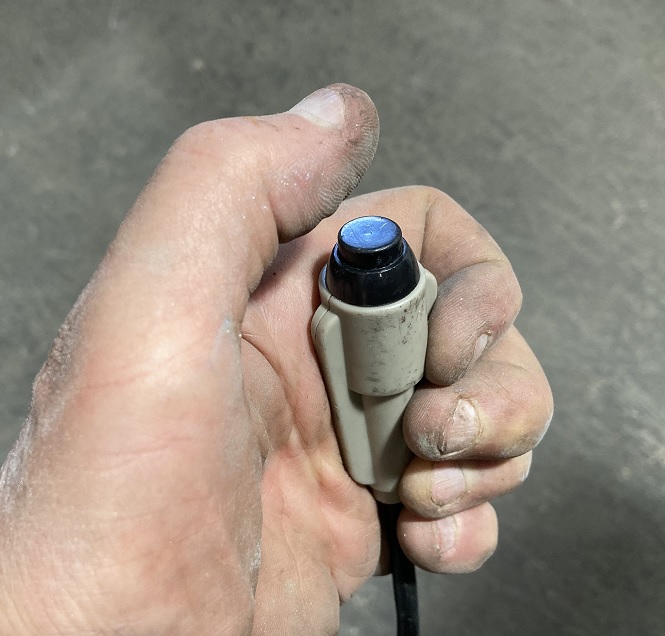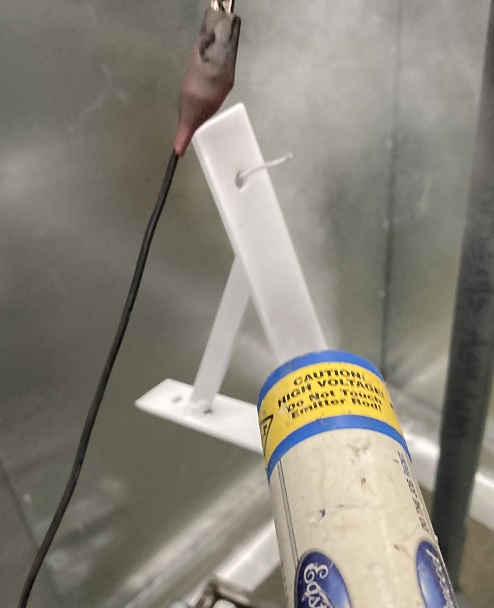Brackets Tutorial 3: No Frills Shelf Bracket: Difference between revisions
No edit summary |
|||
| Line 228: | Line 228: | ||
[[File:SW_gear_icon_tiny.png|10px|thin strip]] | [[File:SW_gear_icon_tiny.png|10px|thin strip]] | ||
[[File:Tut3_Bracket_nofrills_powdercoat_gun_plug.jpg|170px|plug it in]] | [[File:Tut3_Bracket_nofrills_powdercoat_gun_plug.jpg|170px|plug it in]] | ||
Select a color of powder with which to coat the workpiece. Color samples are hanging from the racks where the jars of powder are stored. Note: Some of the pigments are transparent. These require a light-colored (e.g. white) base coat. | |||
Open the jar and screw it onto the applicator gun. The dip tube reaches to the bottom of the jar. | |||
Make sure the compressed air is hooked up to the applicator. The regulator pressure is set to such a low value it hardly causes the needle to deflect from zero on the gauge. | |||
Squeeze the trigger. The air stream should sound like a normally exhaled breath of air, and there should be just a thin waft of powder emerging from the gun barrel. In the illustration on the [[:Category:Powder_Coating_Facility | powder coating page]] the pressure was set abnormally high to produce a dramatic effect. | |||
Grasp the charge button in one hand and point the applicator gun at the workpiece, held 2 or 3 inches away. Depress the charge button and squeeze the trigger. A barely-visible puff of powder should emerge from the gun barrel and mostly deposit on the workpiece. | |||
The electrostatic charge causes the powder to coat the workpiece around the sides as well as the front. You will need to move the gun around the workpiece to make sure it is uniformly coate on all sides, top and bottom. | |||
[[File:Tut3_Bracket_nofrills_powdercoat_gun_powder.jpg|200px|powder jar on gun]] | |||
[[File:SW_gear_icon_tiny.png|5px|thin strip]] | |||
[[File:SW_gear_icon_tiny.png|5px|thin strip]] | |||
[[File:Tut3_Bracket_nofrills_powdercoat_regulator.jpg|300px|regulator zero]] | |||
[[File:SW_gear_icon_tiny.png|5px|thin strip]] | |||
[[File:SW_gear_icon_tiny.png|5px|thin strip]] | |||
[[File:Tut3_Bracket_nofrills_powdercoat_charge_button.jpg|120px|charge button]] | |||
[[File:SW_gear_icon_tiny.png|5px|thin strip]] | |||
[[File:SW_gear_icon_tiny.png|5px|thin strip]] | |||
[[File:Tut3_Bracket_nofrills_powdercoat_coating_action.jpg|250px|coating the bracket]] | |||
Revision as of 13:12, 20 September 2024
Link to: Bracketage Main Page
Introduction
This document shows a very simple process for making a right-angle shelf bracket. It uses mostly GREEN tools that don't require any training. The dimensions are 6" x 6" x 1-1/4" but the reader will see that these dimensions are arbitrary.
Cut the blank
We use 1-1/4" x 1/8" steel strip and cut it on the Ironworker. Mark the overall length of the bar and the line where it should be bent with a highly visible marker. Put dots where the mounting holes will go.
Turn on the power to the Ironworker so the blade rises to the top of its travel.
Insert the bar and line up the cut line with the blade of the Ironworker shear.
Tigthen down the stock clamp. Depress the foot pedal on the Ironworker to bring the shear blade down.
Release the foot pedal as soon as the bar is cut! DO NOT allow the Ironworker to bottom out!
Punch the Mounting Holes
Now we punch the mounting holes in the blank.
Turn off the power to the Ironworker.
Select the punch and die set for 1/4" holes. Note that the die for 1/4" holes is 1/32" larger in diameter: 9/32". Tools for tightening the punch and die are provided in the tool box.
Place the die in the die seat on the punch table with the small hole facing up. Tighten with the hex wrench provided.
Insert the punch into the punch socket and tighten the nut only finger tight prior to aligning it.
Grab the handle at the top of the punch spindle and pull it down to manually lower the punch into the die.
Make sure the punch is centered in the hole in the die. Push it around by hand until it is centered
Tighten the punch with the wrench provided and then return the handle to its top position.
Swing the upper part of the stripper into position.
Place the lower part of the stripper underneath it.
Turn on the power to the Ironworker.
Place the workpiece under the stripper and lower the punch manually to align one of the marks on the workpiece with the punch. Return the release handle to the top position.
Depress the foot pedal to bring the punch down.
Release the foot pedal as soon as the hole is punched! DO NOT allow the Ironworker to bottom out!
Repeat the process until all of the holes are punched.
Bend the Bracket
This operation uses the Hydraulic Shop Press that can be found in the back of the shop near the chop saws.
Place the workpiece in the bending tool and lower the tool until it lightly presses against the workpiece.
Square up the workpiece in the tool and make sure the bend mark is under the tool.
Pump the press and bend the workpiece. Check the angle periodically to make sure it comes out with a right angle.
Cut and Weld the Diagonal Brace
To strengthen the bracket, we add a diagonal brace to the bracket. First we cut it on the Ironworker.
You can measure it, or you can place the bent piece on a piece of bar stock (in this case, 1/2" x 1/8") and mark it. Try to account for the width of the pen tip.
You can insert bar stock at an angle into the Ironworker. Clamp as normal and chop.
Assemble the angle brace to the bracket on the welding bench. As shown it is held up with welding magnets.
Weld the brace to the bracket with a MIG welder.
The MIG welder is a RED tool. You must be trained and tool-tested in order to use this tool.
Cleaning
Before finishing the bracket, we will use the sand blaster to clean off oxide and slag residue from the welding process.
This is a RED tool. You must be trained and tool-tested in order to use this tool.
Before working in either the sand-blaster room or the powder-coating room, you MUST don goggles and a dust mask.
Plug in the two-stage dust collector located in the back of the sand-blaster room.
Also switch on the room ventilation fan located adjacent to the CNC plasma cutter.
IF the hopper is empty, add media to the cabinet. Don't add too much. There should only be about 2 quarts of media in the hopper.
Place the workpiece into the sand-blaster cabinet and seal the door shut.
To blast, point the gun at the workpiece and depress the foot pedal.
CAUTION: Wait about two minutes before opening the hatch to the blast cabinet.
The cleaned part should have a granular texture and be uniformly gray in color.
After using the sand blaster, please drain out the media and sift it.
The drain is located at the bottom of the hopper. Place a dustpan or a tray under the drain hatch and open it.
Pour the media through the screen into the storage bucket. Clean up any media that has spilled on the floor.
When leaving, unplug the two-stage dust collector and switch off the lights.
Powder Coating
The bracket is to be finished in the powder coating facility located along the southern wall of the Metal Shop.
The tools in the facility are RED tools. You must be trained and tool-tested before you can use this facility.
Reminder: You MUST wear a dust mask and goggles when working in the room!
Turn on the oven. The one shown is or smaller pieces like the bracket. There is also a large oven sized for bicycle frames. It takes about 45 minutes to heat up, so you may want to switch it on before operating the sand blaster.
Hang the workpiece by a wire hook on the rolling rack. Attach the ground clip for the powder gun to the wire hook.
Switch on the booth blower and the booth light.
This facility has no external ventilation. The air in the room passes through the paper filters in the back of the booth and passes immediately back into the room. When the ovens are on the ROOM GETS HOT!
The Eastwood applicator gun hangs on hooks on the right-hand wall of the spray booth.
There is no power switch. Turn it on by plugging it in.
Select a color of powder with which to coat the workpiece. Color samples are hanging from the racks where the jars of powder are stored. Note: Some of the pigments are transparent. These require a light-colored (e.g. white) base coat.
Open the jar and screw it onto the applicator gun. The dip tube reaches to the bottom of the jar.
Make sure the compressed air is hooked up to the applicator. The regulator pressure is set to such a low value it hardly causes the needle to deflect from zero on the gauge.
Squeeze the trigger. The air stream should sound like a normally exhaled breath of air, and there should be just a thin waft of powder emerging from the gun barrel. In the illustration on the powder coating page the pressure was set abnormally high to produce a dramatic effect.
Grasp the charge button in one hand and point the applicator gun at the workpiece, held 2 or 3 inches away. Depress the charge button and squeeze the trigger. A barely-visible puff of powder should emerge from the gun barrel and mostly deposit on the workpiece.
The electrostatic charge causes the powder to coat the workpiece around the sides as well as the front. You will need to move the gun around the workpiece to make sure it is uniformly coate on all sides, top and bottom.

